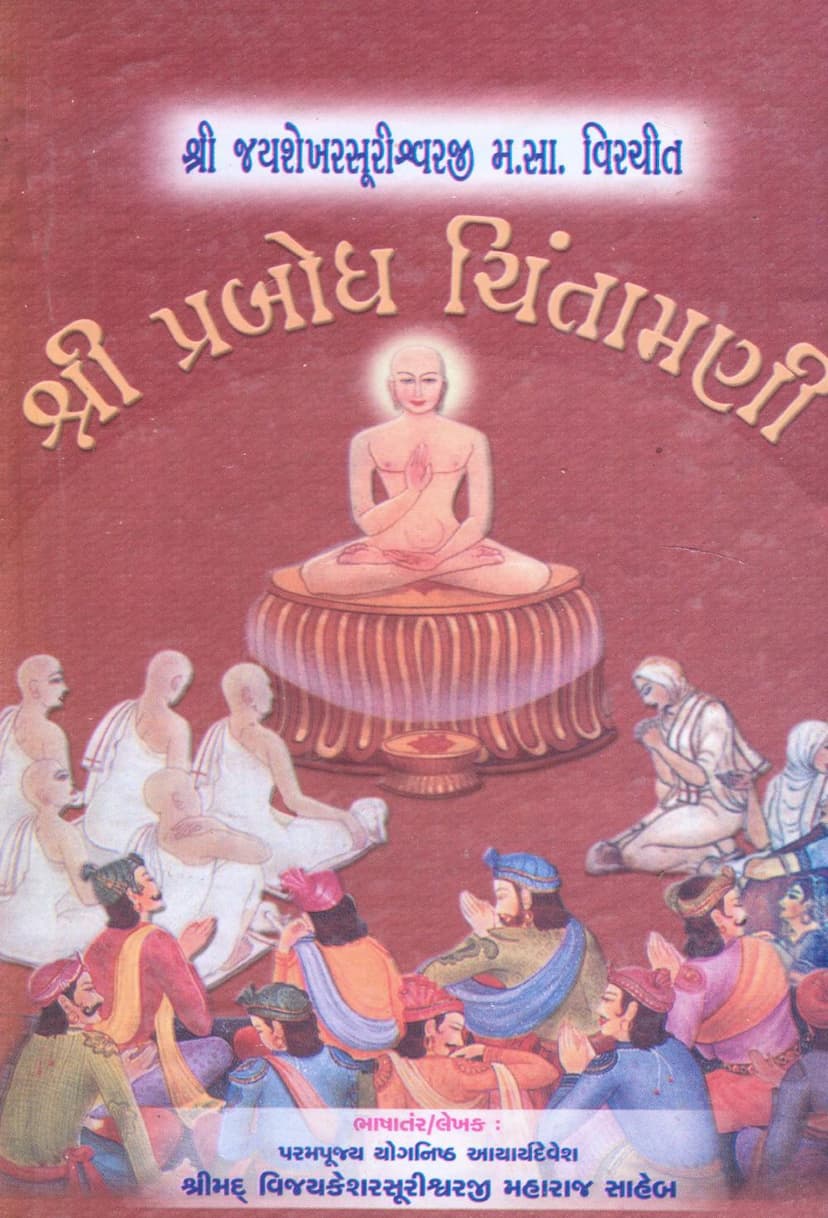Prabodh Chintamani
Added to library: September 2, 2025

Summary
This document is a Jain text titled Prabodh Chintamani, authored by Jayshekharsuri and translated/written by Acharya Vijaya Kesharsuri. Published by Shri Mukti-Chandra-Shraman Aradhana Trust, this is the second edition, costing ₹30.00, printed in Vikram Samvat 2036 (1979 CE).
The book is a commentary or elaboration on the original work by Acharya Jayshekharsuri, originally composed in Samvat 1462. The translator, Pt. Shri Kesharvijayji M.Sa., is a disciple of Acharya Vijaya Kamal Surishwarji M.Sa., who was the protégé of Acharya Vijaya Prabhachandrasurishwarji M.Sa. The book is dedicated to the third death anniversary of Acharya Vijaya Prabhachandrasurishwarji M.Sa.
The core theme of the book revolves around the allegorical battle between Moh (delusion/attachment) and Vivek (discretion/wisdom). It aims to illustrate the nature of these two forces within a soul and how Vivek can ultimately triumph over Moh.
Key highlights and content of the Prabodh Chintamani include:
-
Structure: The text is divided into seven chapters (Adhikars).
- Chapter 1: Describes the nature of the Supreme Soul (Paramatma).
- Chapter 2: Narrates the life stories of the first Tirthankara, Shri Padmanabhji, and his disciple Shri Dharamruchi Anagar.
- Chapter 3: Details the origin of Moh and Vivek and the granting of kingship to Moh.
- Chapter 4: Describes Moh's attainment of kingship.
- Chapter 5: Narrates Mohraja sending his emissaries to investigate Vivek, and the victory of Kandarp.
- Chapter 6: Describes Kandarp's entry into the city, the arrival of Kalikala, the death of Mehraja, Vivek's marriage with Sayamshri, and the preparation for war with Mohraja.
- Chapter 7: Details Moh's defeat, Vivek's reign, and the nature of the Siddha (liberated soul) in the final section.
-
Allegorical Narrative: The book uses a rich tapestry of allegories to explain Jain philosophy. The primary narrative involves:
- Hamsraja (the soul): Represents the individual soul, seeking liberation.
- Maya (illusion/deception): Represents the forces that bind the soul.
- Moh (delusion): Represents attachment, desire, and ignorance, personified as a king or a powerful force.
- Vivek (discretion/wisdom): Represents the guiding principle of right knowledge and conduct, personified as a virtuous prince or king.
- Sanyamshri (goddess of restraint): Represents righteous conduct and self-control, who marries Vivek.
- Other characters: Represent various karmic forces, virtues, and vices.
-
Key Philosophical Concepts Explained:
- The Nature of the Soul: The text delves into the soul's inherent purity and its journey through the cycle of birth and death.
- The Struggle Between Attachment and Discretion: The central allegory highlights how attachment and worldly desires (Moh) cloud the soul's true nature (Vivek).
- The Importance of Wisdom and Right Conduct: The narrative emphasizes the power of Vivek to overcome delusion and achieve liberation.
- The Path to Liberation: Through the allegorical journey, the book implicitly guides the reader towards understanding the path of righteous conduct, self-control, and spiritual knowledge.
- Critique of External Rituals: There are sections that critique blind faith, empty rituals, and misinterpretations of religious practices, emphasizing the importance of internal purity and understanding.
- The Role of Karma: The text implicitly shows how karma influences the soul's journey and the consequences of actions driven by Moh versus Vivek.
- The Fourfold Sangh: The establishment of the four types of followers (monks, nuns, laymen, and laywomen) by Tirthankaras is mentioned.
-
Literary Style: The writing is described as engaging, offering valuable insights at each stage, much like a seed growing into a fruit-laden tree. It uses vivid descriptions, such as the nature of different tastes and the importance of righteous conduct over mere external rituals.
-
Guidance for Spiritual Growth: The book encourages individuals to strive for self-improvement and make strong efforts in their spiritual journey, emphasizing that while destiny plays a role, individual effort (Purushartha) is crucial for spiritual progress.
In essence, Prabodh Chintamani is a profound Jain scripture that uses a captivating narrative to illuminate the path of spiritual awakening by contrasting the destructive influence of delusion with the liberating power of wisdom and right conduct, ultimately guiding the soul towards its true, pure state.